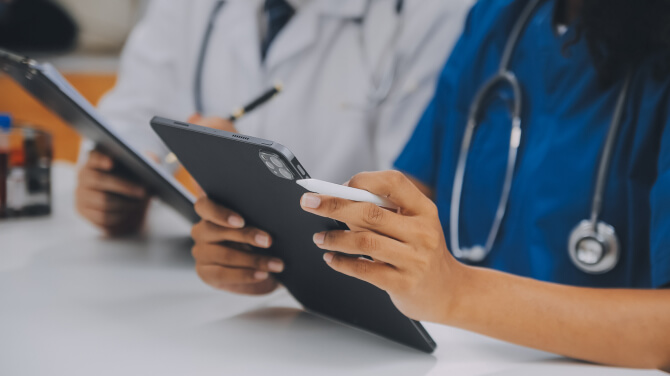Resource Center
All ContentBlogCase StudiesCustomer Success StoriesebooksWebinars
- Marty Fenn
- December 19, 2025
- 8 min read
9 data points proving AI in healthcare works
Adoption of AI in healthcare is expanding. Find out how athenaOne customers are already benefitting.Read moreMore resources

- Marty Fenn
- December 19, 2025
- 8 min read
AI in healthcare
9 data points proving AI in healthcare works
Adoption of AI in healthcare is expanding. Find out how athenaOne customers are already benefitting.
Read more
- Erika Christiansen
- January 08, 2026
- 3 min read
practice management
Bringing lactation consulting to families across Texas
Read about how Breastfeeding Success Co. grew their business and got paid quicker with athenaOne.
Read more
- athenahealth
- December 23, 2025
- 5 min read
electronic health record
Scaled connectivity through Platform Services
See how to simplify affiliate integration and enhance care coordination without costly EHR changes.
Read more
- athenahealth
- December 22, 2025
- 4 min read
payer solutions
Modernizing prior authorization with athenaPayer®
Imagine a faster, better way to obtain prior authorization. Here’s how athenaPayer saves work.
Read more
- Marty Fenn
- December 19, 2025
- 8 min read
AI in healthcare
9 data points proving AI in healthcare works
Adoption of AI in healthcare is expanding. Find out how athenaOne customers are already benefitting.
Read more
- Erika Christiansen
- January 08, 2026
- 3 min read
practice management
Bringing lactation consulting to families across Texas
Read about how Breastfeeding Success Co. grew their business and got paid quicker with athenaOne.
Read more
- athenahealth
- December 23, 2025
- 5 min read
electronic health record
Scaled connectivity through Platform Services
See how to simplify affiliate integration and enhance care coordination without costly EHR changes.
Read more
- athenahealth
- December 22, 2025
- 4 min read
payer solutions
Modernizing prior authorization with athenaPayer®
Imagine a faster, better way to obtain prior authorization. Here’s how athenaPayer saves work.
Read more
- Marty Fenn
- December 19, 2025
- 8 min read
AI in healthcare
9 data points proving AI in healthcare works
Adoption of AI in healthcare is expanding. Find out how athenaOne customers are already benefitting.
Read moreEmpower your practice

AI powered patient engagement
Learn how AI tools can help improve patient loyalty and outcomes.






